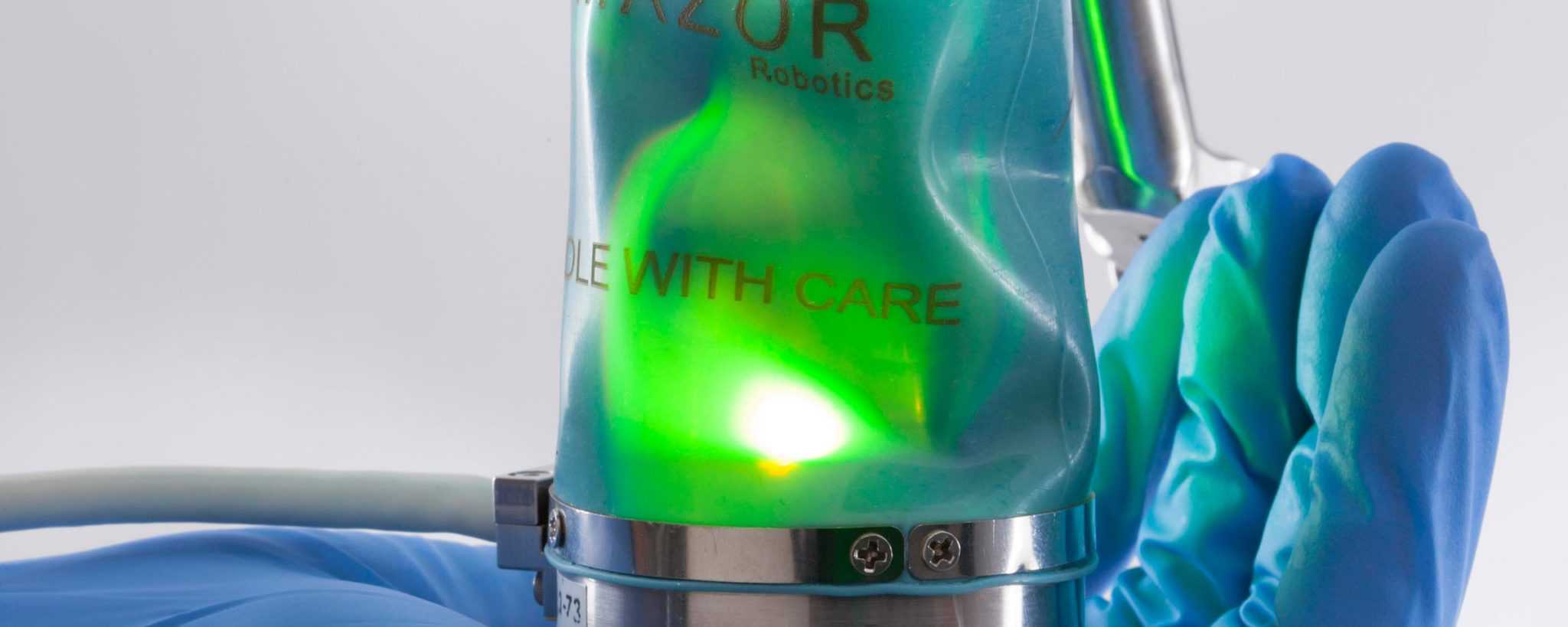ROBOTIC SPINAL SURGERY-MAKING SPINAL SURGERY SAFER AND MORE PRECISE
WHAT IS ROBOTIC GUIDANCE IN SPINAL SURGERY
Robotic spinal surgery is one of the latest advances in neurosurgery and spinal surgery. Using the Mazor Renaissance Robot, Professor Richard Bittar was the first surgeon in Victoria and the second Neurosurgeon in Australia to perform robotic spinal surgery. This technology is now available to patients who desire leading edge technology in the operating theatre.
Traditionally, surgeons perform complex spinal surgery by placing screws in the spinal bones either ‘freehand’- using their judgement and feel, or with the assistance of many X-rays taken during the procedure. These X-rays, if taken in large numbers, expose the patient (and the surgeon) to significant amounts of radiation, which potentially may be harmful. Using these techniques, there is a small but very significant risk of placing the screws in the wrong place, or in a sub-optimal position. The end result could be paralysis or a less effective operation.
Robotic spinal surgery was conceived to introduce a much greater degree of accuracy to spinal surgery, thereby reducing the risk of screw misplacement. Using the Mazor Renaissance Robot, your surgeon stays in control of the surgery and places the screws with his or her hands, however the robot provides a guidance system, based on a computerised pre-operative plan. This increases the degree of precision that the surgeon can offer, resulting in an accuracy of 1mm.
The robotic guidance system allows surgeons to perform many types of spine surgery, from the simplest to the most complex – more safely, efficiently, and accurately. It reduces radiation exposure, and potentially lowers complication rates, postoperative pain, and recovery time.
WHAT ARE THE BENEFITS OF ROBOTIC SPINAL SURGERY?
Spinal surgery can be one of the most challenging and risky types of surgery that patients require.
Variations in the anatomy and bone quality of patients, ability to take good quality x-rays during surgery, and the possibility of human error, combined with the critical nature of the spinal cord and nerves on which we operate means that relatively minor mistakes can translate into major complications.
It is important for neurosurgeons to constantly find ways to reduce the risks of surgery, and by employing the Renaissance Spinal Robot in spinal surgery, these risks can be lowered. Performing spinal surgery the traditional way without robotic guidance can be associated with a screw misplacement rate of up to 10%, and a nerve damage rate of up to 2%. By using the robot to assist with screw placement, the rate of correct screw placement increases to over 98%.
In summary, the benefits are:
- More accurate placement of screws around the spinal cord and nerves (over 98% accuracy)
- Faster surgery, with lower risks associated with more prolonged operations and greater blood loss
- Less radiation exposure
- A greater margin of safety
WHAT IS THE DOWNSIDE OF ROBOTIC SPINAL SURGERY?
At this stage there do not appear to be any downsides. Professor Bittar has been performing spinal surgery for over 10 years, and has carried out thousands of operations. He is excited to be able to offer his patients access to this wonderful technology in Victoria, at Melbourne Private Hospital.
There are no additional costs to the patient to have spinal surgery with Prof Bittar using the robot. We want to keep this advanced medical device accessible to as many patients as possible. Feel free to make an appointment if you are considering having spinal surgery and would like to know if you may be a candidate for the robot.

